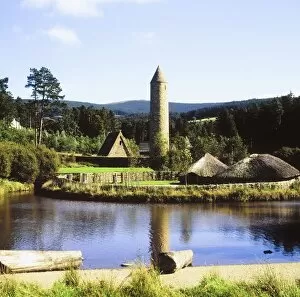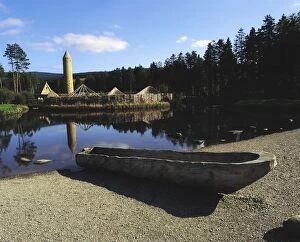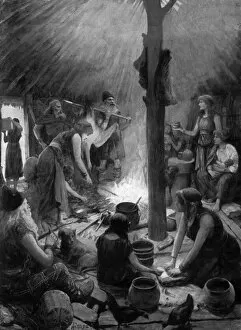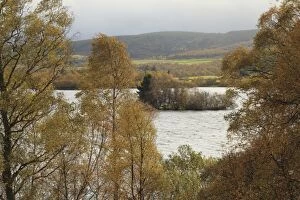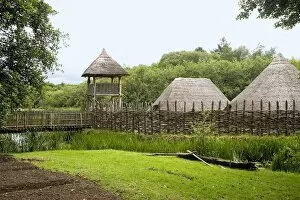Crannog Collection
The Iron Age Crannog Centre takes visitors on a journey back in time to experience the fascinating world of crannogs
For sale as Licensed Images
Choose your image, Select your licence and Download the media
The Iron Age Crannog Centre takes visitors on a journey back in time to experience the fascinating world of crannogs. These ancient dwellings, built on artificial islands, were once common across Scotland and Ireland. One such replica can be found on Llangorse Lake in the Brecon Beacons, Powys, Wales. In "The Discovery of a Crannog on the Clyde, " we uncover further chapters of unwritten history. This litho artwork sheds light on the intriguing past of these unique structures. Meanwhile, at Ulster History Park in Omagh, County Tyrone, Ireland, visitors can explore both a crannog and an early monastery - two important aspects of Irish heritage. "The Ancient Briton on his Crannog" showcases how our ancestors lived atop these man-made islands. Another replica they are be admired at Craggaunowen Living Past Experience in County Clare, Ireland. Here, visitors step into reconstructed dwellings to get a taste of life long ago. Clough Oughter Castle in County Cavan is another site where you can witness the remnants of a crannog's existence alongside medieval architecture. And at Ulster History Park in Co Tyrone, Ireland; one can marvel at both a round tower and crannog - testaments to ancient engineering prowess. But what does all this have to do with cheese? Well. . Nothing. The mention of "cheeseboard" seems out-of-place amidst these historical wonders. Lastly, Loch Kinord offers breathtaking views not only for its freshwater loch but also for its prehistoric artificial island or crannog that stands as evidence of human ingenuity throughout time. From Wales to Scotland and from England to Ireland – these various locations showcase different aspects related to crannogs' rich history and cultural significance. So immerse yourself in their stories and discover the secrets hidden within each replicated dwelling or archaeological find.



